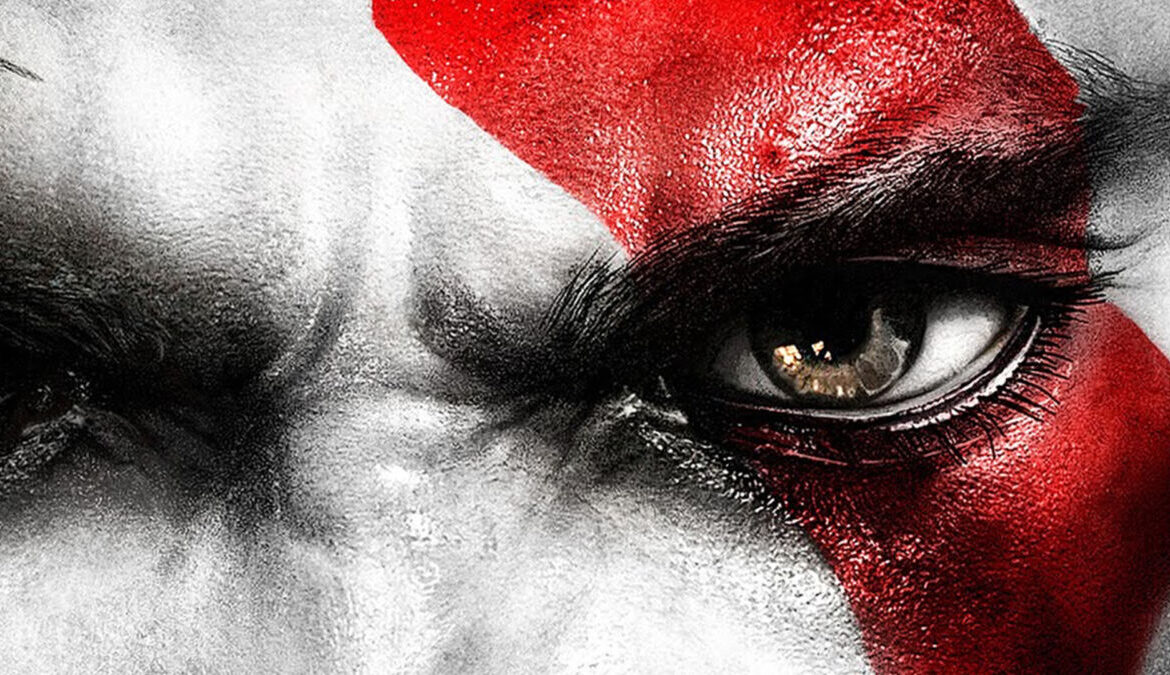In 2005, Santa Monica Studios unleashed God of War for the PlayStation 2, a brutal hack-and-slash game series that has dominated PlayStation platforms in the years since.
The early entries in the series depicted a young, destructive, and eventually regrettable character whose rage shattered the Greek pantheon. Despite this, he still retains some humanity that will no doubt pull at the heartstrings of many players when he isn’t busy fighting giant monsters on a scale not seen in many video games, even if he’s mostly all about revenge.
In a rare twist, the reboot has seen much love from fans, and the continuation of Kratos’s narrative is thrilling to watch as the events of the retired Spartan unfold in a believable way. The God of War franchise has always been a top seller for PlayStation, with the latest entry, Ragnarök, selling over 11 million copies.
The God of War series has evolved into many different shapes and sizes, but one thing that hasn’t remained completely consistent is the camera angles. From the side-scroller and zoomed-out camera perspective that covers the whole arena to the visceral, third-person over the shoulder perspective seen in the more recent entries, the franchise still puts players at the forefront of combat. It’s a big debate about which one works best, and a lot of it is down to taste. Regardless of what you think, every perspective captures the gory brutality and gripping action that is essential to the the formula.
With that out of the way, let’s delve into Kratos’ long and rampageous history and find out which games are worth the hype and which are better left buried under the weight of Kratos’s might.
10. God of War: A Call from the Wilds
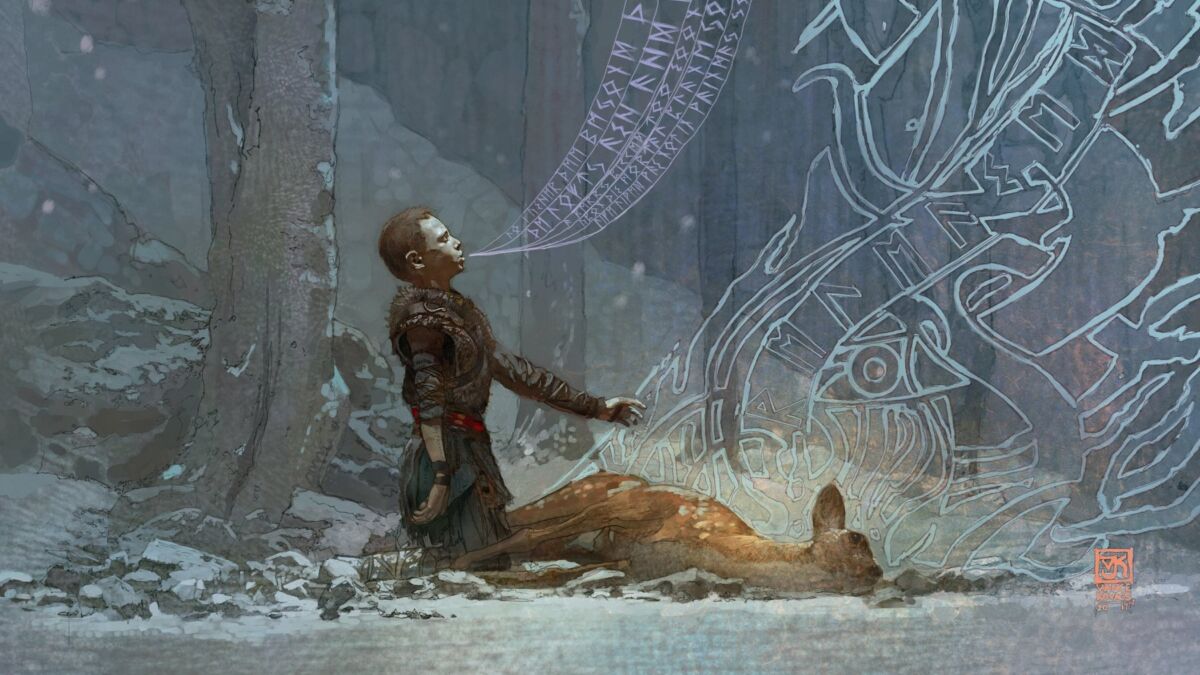
Platform(s): Facebook Messenger
By far the most abstract God of War game on this list, A Call from the Wilds is a text adventure prequel game to 2018’s God of War that has players following Atreus. Made for a rather niche genre these days, A Call from the Wilds is filled with player choice to craft their own narrative across the 8 short chapters.
There’s some cool art implemented throughout that acts as chapter headers to help visualise and set the tone for the section you are in. Upon completion, you will be rewarded with high-quality downloadable versions of the same art you encounter along your journey. There are 8 in total to collect, which acts as a neat little reward system for your time in this game.
The gameplay is about as non-gameplayey’ as you’d expect with its focus on written narrative. You just type out your choice when prompted to progress the story. Depending on your decisions, some encounters are handled totally differently from others. This is easily the best feature A Call from the Wilds has to offer in its half-hour experience.
There’s even optional side areas to explore, but unfortunately, they don’t amount to much. The choices are mediocre and barebones, like picking which direction to go only to find out most of them are blocked off. If you are a gamer who loves to explore every nook and cranny, then this will no doubt be the most tedious part.
Since it’s a narrative-driven game with multiple choices, you’d think it would be fun to replay several times and see what stuff you missed. In some cases, you do find some interesting little side stuff or reactions, but the story’s slow and linear start does make replayability more tedious than it should feel.
There’s not a lot of glaring negatives to say about A Call from the Wilds, but there’s also not a lot to praise either. It’s just fine. A short-side adventure that achieves what it set out to do, and that’s great, but there’s not much game to be played. You don’t need to know anything about this side story to understand 2018’s God of War, nor does it add a whole lot to the experience.
9. God of War: Betrayal
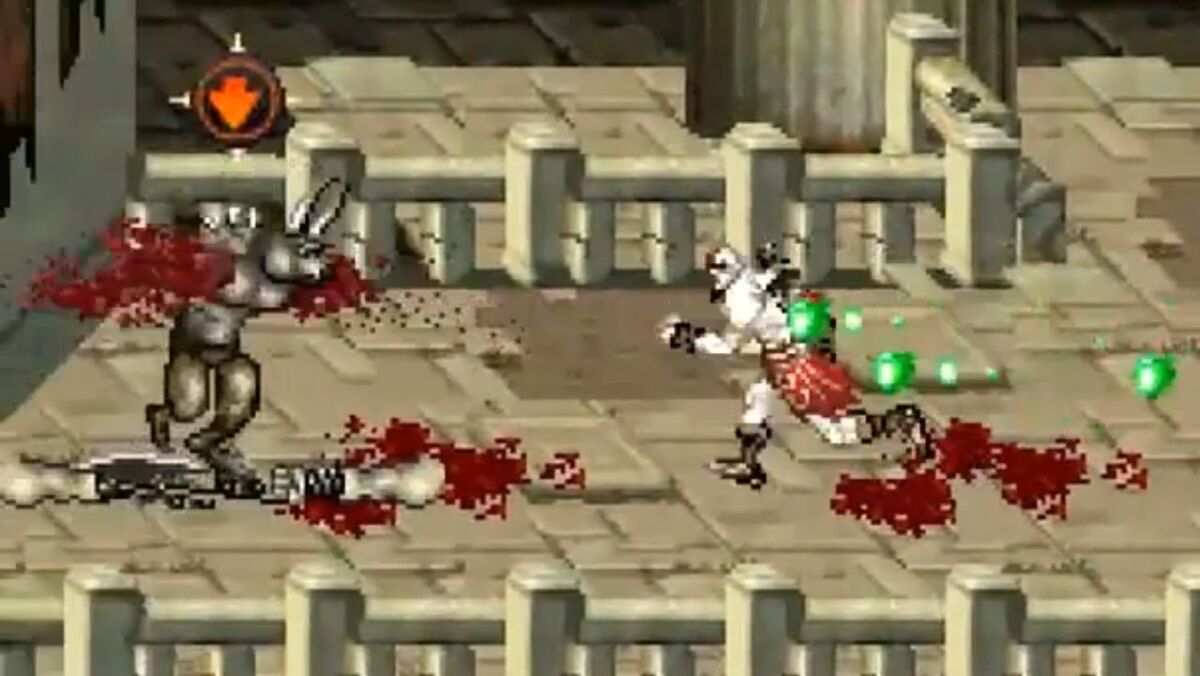
Platform(s): Java Platform, Micro Edition
Betrayal is an interesting one because it’s the only God of War game that is built for mobile phones that support the Java Platform, Micro Edition. Today’s mobile technology is absent from this, and as a result, God of War: Betrayal is buried in the past. The game is only able to run through an emulator that very few fans would bother with these days.
The story is mostly told through text that unfolds throughout your little adventure, and while it’s nothing groundbreaking, it serves as an excuse to go rage mode on some powerful Greek nerds. Funnily enough, the story is set before the events of God of War II and was confirmed by an employee at Santa Monica Studios to be canon to the God of War series 13 years after its release. Story-wise, it’s just a brief nugget of lore that won’t affect much in the grand scheme of the God of War timeline, so playing this game or understanding its contents is not necessary.
The animations are smoother than you’d expect for an old flip phone game, and Betrayal is presented as a 2D side-scroller with a strong absence of sound. Like seriously, the game is almost silent until you use the heavy attack, which will jump scare the Blades of Chaos out of you the first time you use it.
The main menu has a forgettable soundtrack, and the loading screen has the swirl of a blade audio cue, but that’s about it. If you are playing this game anytime soon, you’re better off listening to your own playlist or maybe the other God of War soundtracks.
There is a fun return to platforming, which the original God of War placed heavy emphasis on, but it doesn’t add anything new to the experience. Combat is presented nicely with creative finisher animations and cool visual flare on the weapons, but the controls are frustratingly finicky. Fortunately, the game is about 90 minutes long, and once you realise you can stun-lock the bosses, you won’t be wanting to crush your phone with the power of a god. Or you can just stop playing the game; it’s up to you.
8. God of War: Ascension

Platform(s): PS3
God of War: Ascension is a mixed bag that in many ways offers new and interesting ideas to diversify the formula but also retreads old ground, sprinkling enemies and combat systems from God of War III. The presentation in this game is incredible, with lighting, sound design, and art direction all coming together in beautiful harmony. However, the game suffers from poor optimisation, with frame rates jumping consistently out of control. This leads to a jarring experience that gets in the way of enjoyment, especially during some of the bigger set pieces the game has to offer.
God of War: Ascension’s combat is nice to play for the most part, with weapons and combos feeling powerful to use and some satisfyingly brutal finishers help keep you engaged. There’s even a grapple, which, on paper, is a fun new addition since you can pull flying enemies towards you or grapple to a group and hack your way through them.
However, more often than not, you’ll be fighting large hordes of enemies, which can make grappling to certain enemies particularly difficult. You can also tether enemies with the grapple, but you’ll be hopping around at such a slow speed that it kills the pacing of the game at times.
God of War: Ascension does achieve something none of the other games in the series have, as it’s the first and only title in the franchise to include multiplayer. However, the execution was rather jumbled, with the most severe backlash coming from the Ascension Online Pass. The pass was designed to keep the publishers happy by allowing players to pay to play online, in some cases for as little as 24 hours, before needing to purchase another one. Fortunately, PSN covers multiplayer for this game, and it still holds a small yet active player base for you latecomers looking to give it a try.
The multiplayer itself is pretty unique, as players pick 1 of 4 gods that give you various buffs and debuffs that can sway you to play a certain way. There’s tonnes of armour and trinkets to customise your character and stats that allow you to tear your opponent’s apart in style.
Different game modes within the multiplayer allow the fleshed-out gameplay to shine, such as horde mode or Team Favour of the Gods, a 4v4 deathmatch where players strive to gain the highest score by killing. It’s fun to beat each other up and have a good laugh with mates, but unfortunately, the game is laced with predatory practices, some of which can give advantages to players who purchase the DLC packs.
Did the multiplayer mode need to exist? Arguably not, since the development time spent on this mode could have helped flesh out the rather lacklustre narrative the campaign has.
7. God of War: Chains of Olympus

Platform(s): PS3, PSP
Acting as a prequel to God of War, God of War: Chains of Olympus was the first in the series to come to PlayStation Portable with the help of Ready at Dawn. Despite the hardware limitations of the PSP, the game delivered the polished hack-and-slash experience that fans have come to expect.
The double bait in the opening section is especially cool, where Kratos opens a door and Bam, a huge Cyclops appears for a quick time event, and you think you’ll be fighting this guy, then bam, an even bigger Basilisk shows up and chomps the Cyclops in one bite. It’s stuff like this that keeps the fun factor and element of surprise throughout Chains of Olympus’s short narrative.
There’s some interesting internal character conflict with Kratos’s daughter, whose existence anchors some of his bigger decision-making in the last half of the game. Ultimately, the story is a little contradictory, yet it also introduces some interesting conflict and lore bits during the Spartan’s time serving the Olympians.
By far the most impressive feature Ready at Dawn achieved with Chains of Olympus is transporting the fluidity and fun factor that you’d expect in God of War combat to the PSP. On PS3 as part of the often forgotten God of War: Origins Collection, the controls handle very similar to the first game in the series. It’s actually more advantageous to play on console, as you can utilise the dodge mechanic thanks to a second analogue stick, which plays much easier than it does on the PSP.
Despite the technical limitations of the PSP, Chains of Olympus pushed the boundaries in terms of scope that the portable console had seen before. However, it’s visually more impressive on the PS3, since it has a higher resolution, which graphically is just about passable by today’s standards and expectations thanks to that iconic aesthetic.
Chains of Olympus isn’t a bad game by any means, but it doesn’t reinvent or add to the formula like other entries in the series. Its difficulty in doing so was largely due to the efforts to bring the God of War series over to Sony’s portable device, and in managing that, it should always be commended.
6. God of War: Ghost of Sparta
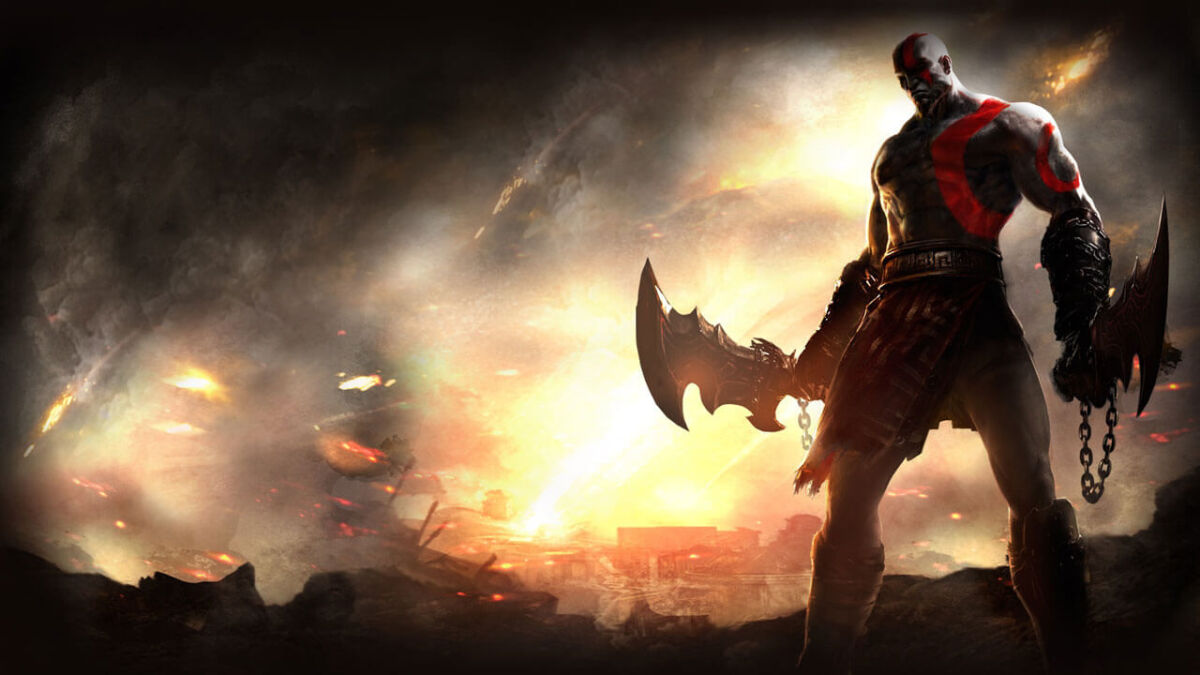
Platform(s): PS3, PSP
Since Ready at Dawn already had experience bringing the God of War franchise to PlayStation Portable, the team went all out and expanded upon the already decent Chains of Olympus in God of War: Ghost of Sparta.
The most surprising aspect of Ghost of Sparta is how intimate the story is as Kratos searches for his long-lost brother while unravelling a plot the gods have planned for him. It’s not some world-ending threat that Kratos must hack to pieces or a massacre of the gods, but a more emotional and personal journey that fans can get behind.
Combat has been tweaked this time around in the shape of a new ability, weapon, and magic attacks. The ability added is a Hyperian Charge, where Kratos dashes towards an enemy and pummels them repeatedly. It’s a fun addition and great for one-on-ones with humanoid enemies.
Of course, you have the standard god-slaying toolkit that Kratos always uses, such as the Blades of Chaos and Gauntlet of Zeus, but this time around, Ready at Dawn has given players a new tool to use on the Greek battlefields. The Arms of Sparta is a unique spear and shield duo that is great for linear fighting. You can engage in melee combat and throw projectiles to take out those pesky ranged or out-of-reach enemies from afar, which before was only achieved via magic.
The downside is that you get the weapon so late in the game that upgrading it doesn’t seem as viable given how powerful your other weapons are at this point. You also lose access to it for the final fight, so dumping all your points into it can feel like a waste.
The new spells are hit-or-miss, with some cool concepts like freezing enemies around you or stunning them with shock damage. Practicality-wise, the freeze duration and range are too short to make it useful given the amount of enemies you’ll be facing, and the shock attack leaves you vulnerable when casting.
Graphically, Ghost of Sparta has improved significantly over Chains of Olympus, not necessarily in fidelity but in detail and scope. Character animations are even more fluid, textures are more intricate, lighting effects have been enhanced, and the backdrops are stunning even by PSP standards. It’s arguably the best-looking game on PSP, and the resolution is increased further for the PS3 port as part of the God of War: Origins Collection.
5. God of War (2005)
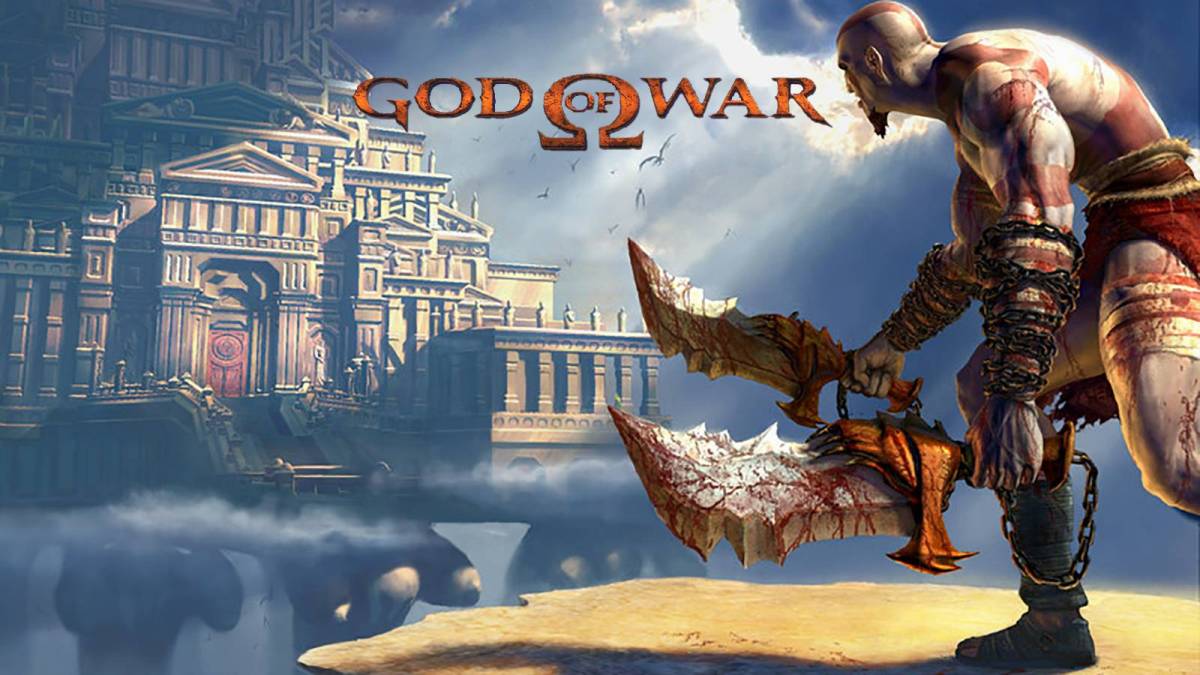
Platform(s): PS2
God of War started one of Sony’s most successful game series of all time. Game director David Jaffe was inspired by the 1981 feature film Clash of the Titans, which helped narrow the setting into Greek mythology.
God of War’s story is also great, especially since Kratos is an anti-hero, heartlessly killing civilians and innocent people to achieve his goals. It’s an interesting balance, as his grief over accidentally killing his wife and daughter weighs him down. With that in mind, you can understand his motives quite clearly, which translates well to his aggressive gameplay and hostile demeanour.
For a game from 2005, combat is still really smooth and aggressive, with slick animations to add some weight behind every attack. While not the flashiest or most complicated move set, it has aged well even by today’s standards. God of War is also the game that introduced the iconic Blades of Chaos, a weapon that has its chains wrapped around the wrists of many cosplayers in the God of War fandom. It’s not perfect, as combat while climbing feels slow, repetitive, and kind of unnecessary.
The levels themselves are fun to hack through and even have hidden chests sprinkled around short corners off the beaten path that offer rewards to make Kratos stronger. There’s plenty of fun and intuitive puzzle-solving to break up the adrenaline-fuelled combat sections that make up most of the game.
There’s also some platforming, which varies from fun and creative to oh my God of War, please stop. For example, dodging saw blades in a neat little timing puzzle to progress the level is fun, but plank walking slowly across thin spines of wood only to fall off or get knocked off is frustrating and tedious.
That being said, God of War deserves such high praise for its epic soundtrack that fits the Greek mythology theme as well as its electrifying gameplay and intriguing story. A truly complete package filled with nostalgia and an excellent starting point for a series that would only grow from here on out.
4. God of War II
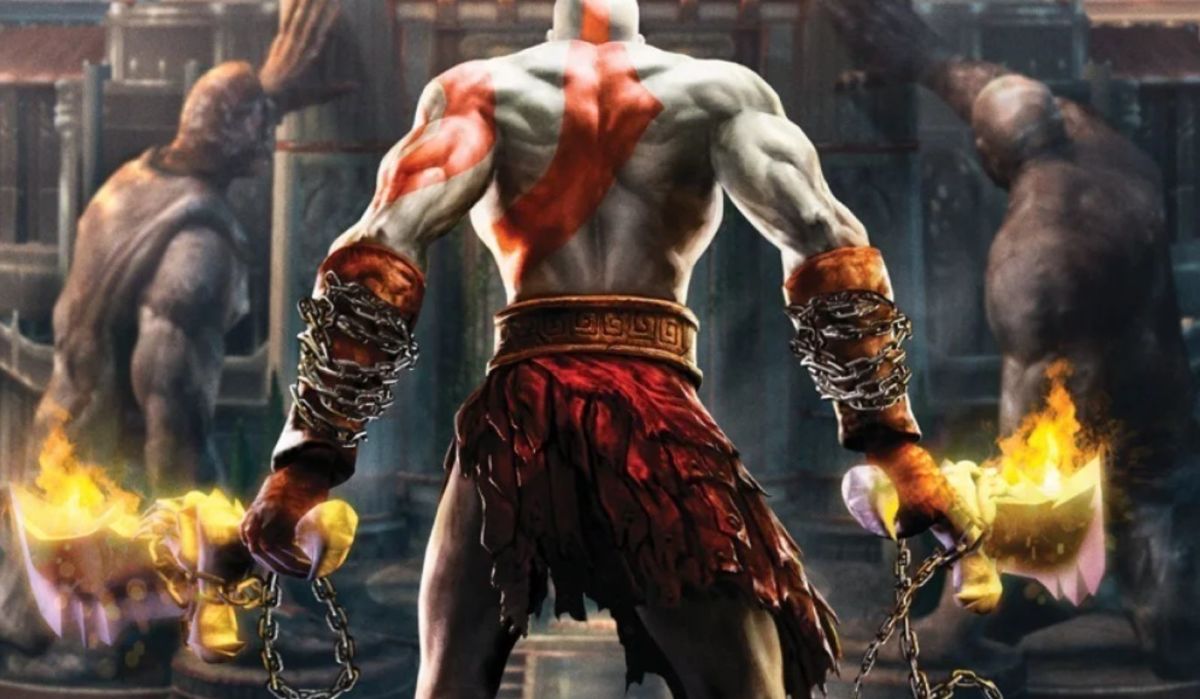
Platform(s): PS2, PS3
With David Jaffe stepping down and Cory Barlog taking over as game director for God of War II, it’s fair to say the pressure was on to continue Kratos’s journey in a meaningful way. As Cory himself put it: “Every day felt like I was thrown on stage opening night to perform a musical that I had never even heard of, much less rehearsed.”
What’s most impressive is that, despite the director having no idea what was going on, Santa Monica Studio still managed to improve almost every aspect of God of War II from its predecessor. From graphical fidelity improvements, larger scope, and refined gameplay to a more interesting story full of neat callbacks to God of War. Even the dreaded plank walking has been improved, with wider planks and smoother controls to traverse over.
The opening to God of War II sets up the narrative about betrayal and revenge perfectly while also teaching the player practically every mechanic in the whole game. It even does it all in the middle of a large-scale battle against a giant monster. It’s explosive, fun, and engaging, and it’s arguably the best tutorial in the series.
The foundation of God of War II’s combat is fundamentally the same as the first game, but what Santa Monica Studios did was add variety to the formula. Small tweaks to the Blades of Athena have bigger implications and allow for a more strategic form of play.
For example, the spin attack staggers enemies around you, allowing for quick follow-ups and crowd control, while the flurry of attacks you can unleash are great for punishing single enemies or picking off the remaining few from a larger battle.
There’s some really fun new abilities full of visual flare that are super useful when you’re feeling overwhelmed. Atlas Quake is a standout example that allows you to stomp up a storm of rocks that stagger every enemy in the arena and can be upgraded 3 times for some hilariously overpowered attacks.
With improved puzzles and four times as many bosses to test your mettle against, God of War II improves upon the already great foundation in just about every way. If you still own a PS2 or PS3, and don’t mind buckets full of blood, then dust that console and give it a try. You’re in for a gory treat if you do.
3. God of War III

Platform(s): PS3
After the success of God of War II, the stakes were high to craft an end to Kratos’s Greek slaying story. How did Santa Monica Studio fare? Well, God of War III was met with a high reception and went on to be nominated for and win numerous awards, including a BAFTA. God of War III is a huge step up for the series that raises the stakes even further with its narrative and graphical fidelity, delivering a package that still plays and looks great by today’s standards.
If you thought the opening to the second game was cool, this one is even more stunning with its impressive sense of scale. So much so that the tutorial feels more like a final mission with how much carnage is occurring in the background. You’re a tiny speck on the back of an army of titans, climbing up the Mountain of Olympus to smite the gods. The tutorial is fast-paced, and while it doesn’t teach you everything like God of War II’s opening does, it teaches you enough, and the spectacle happening around you is always enjoyable for veterans of the series to play through.
God of War III offers plentiful weapon variety that is well-paced throughout to keep the game feeling fresh. While combos and move sets are largely the same from the previous game, outside of some new weapons, the fact you can swap weapons out at any time is a huge improvement to keep you in the heat of combat. The previous games had you flicking through menus just to swap weapons out, which can disrupt the flow of gameplay.
Magic is also tied to the weapons this time around, with each weapon dishing out a different ability. This adds a lot of depth to the combat since it requires you to think about which weapon to use against certain enemies while also deciding which magic spell is best for the tougher encounters. You can also ride some defeated enemies, like the Cerberus, who burns your enemies with its fire breath, or the Cyclops, who stomps around the arena swinging its club to crush the foes before you.
With such a huge amount of weapons comes a large variety of enemies to beat to a pulp and some of the most spectacular boss fights in the entire series. Seriously, the Kronos fight was one of the most jaw-dropping experiences I’ve seen in a video game. There’s also plenty of puzzles sprinkled throughout at regular intervals to help break up the action. They even combine the two at times, like during the labyrinth puzzle, where hordes of enemies attack you while you’re trying to solve it.
2. God of War Ragnarök

Platform(s): PS4, PS5
Following the successful reception of 2018’s God of War, Ragnarök certainly had a lot to live up to. Boy does it shine, as the game raises the stakes, heightens the visuals, and sharpens the Leviathan Axe for the best gameplay in the series.
Outside of another outstanding narrative, there are some new additions to help spice things up. Like more impactful side quests that are not only story-focused but also offer meaningful rewards that make them worth doing. In many ways, God of War Ragnarök can feel like 2018’s God of War, with the core look and feel shining on the surface, but deep down, it’s much more than that.
The world is detailed and diverse, making it the best-looking God of War game out there. It even rivals other games like Horizon Forbidden West with its polished look on modern hardware. Performances, writing, and animations all excel at driving the narrative forward and bringing these characters to life. Kratos has never looked this good; from his snow-encrusted beard to the anger or love behind his eyes, the art direction never fails to amaze.
While Ragnarök’s story is packed full of ambitious set pieces, emotional drama, and intriguing characters, it sometimes feels like there’s too much going on. Some storylines that are introduced just wrap up too quickly, or go on for too long in rather boring non-Kratos adventures where you sit on a weird cow. Had the game’s story been split into a trilogy, including the 2018 title, it might have allowed all the plotlines to sink in.
Regardless, it was an emotional ride to watch unfold and see the relationship between Kratos and a teenage Atreus strengthen and weaken throughout its world-shattering narrative.
The soundtrack is once again a standout ingredient in this feast of a game that carries the familiar hymns and instrumentals from 2018’s God of War and adds a whole lot of new. Bear McCreary even takes the main theme from the previous title and elevates the epicenes brought with it.
Combat is at its greatest heights in the series and expands heavily on the already great combat system of 2018’s entry. The Blades of Chaos have been noticeably reworked to feel almost like the original God of Wars combat system, and each slash is met with a hit of nostalgia.
You can even grapple to other areas of the arena to allow for strategic repositioning during some of the more challenging fights against hordes of enemies. This verticality offers some diverse ways of play, such as the ground slam you can utilise with your axe when leaping from a ledge or parrying unblockable attacks that give Sekiro vibes.
There’s even specific attacks that can only be parried, indicated by the symbol above their heads, signifying a special attack is coming. Armour has also been streamlined for a more linear upgrade system, so you aren’t completely lost in the numbers game RPG jargon that plagued 2018’s God of War.
1. God of War (2018)
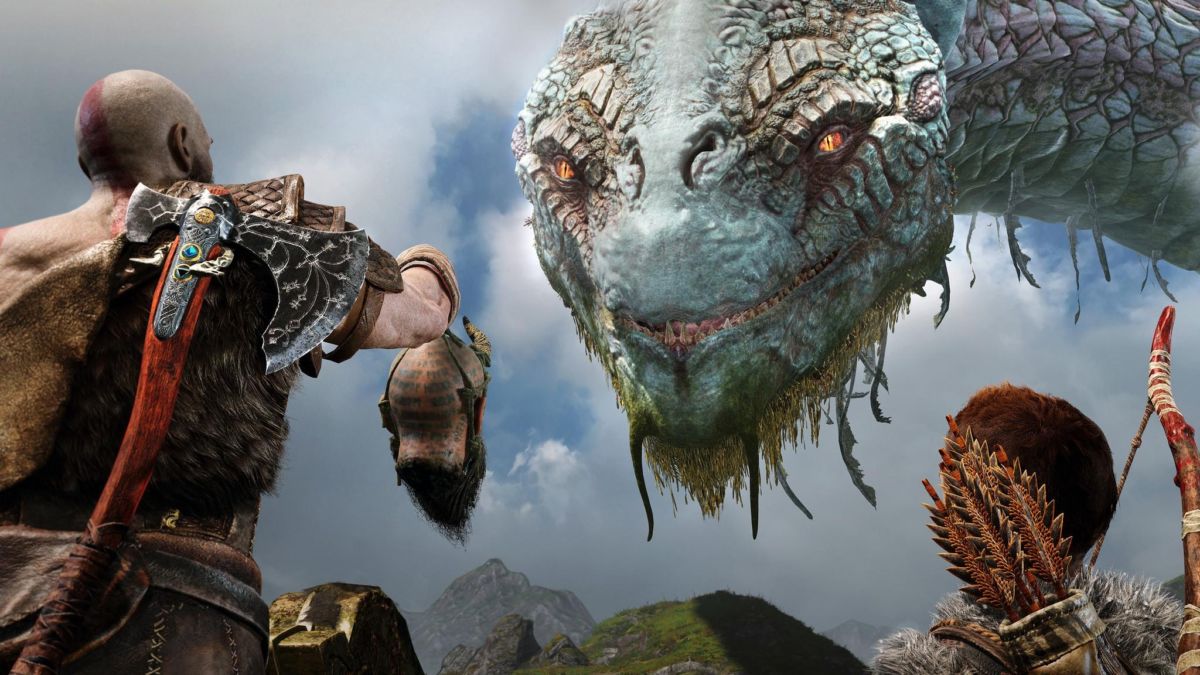
Platform(s): PS4, PC
God of War, Dad of War, Dad of Boy, whatever you want to call it, takes a very different turn into the beautiful, icy world of Norse mythology. Game director Cory Barlog took a big risk for Kratos’ first original adventure on PS4, to the point where he had to fight to keep Kratos and Atreus in the game since the team was met with a lot of self-doubt.
Fortunately, the risk paid off in such a way that it charted a new direction for the series, with Kratos now leaving behind his blood-crazed, “kill em’ all” past in favour of settling down with his boy, Atreus, and recently passed wife. While Kratos’s internal goal doesn’t last long, we do get to see a more burdened and protective side to the now-retired God of War.
The camera is also seamless, which is evident from the moment you start a new game and continues throughout. Cutscenes are interwoven through epic combat encounters, and it’s all so fluid and works remarkably well.
The story premise is rather simple: Kratos and Boy have to journey to the highest peak of all the 9 realms and scatter Atreus’s mother’s ashes. It’s a simple premise, yet it sets the personal journey in motion. And what a journey it is, introducing the most fleshed-out villain in God of War history, Baldur, whose personal journey is intertwined with Kratos’s. Character narrative is where this game shines, and the relationship between Kratos and Atreus is not only unique but something that’s enjoyable to watch and keeps you invested till the end.
Some of the side content is a little hit-or-miss, with a lot of it just feeling like filler fetch quests and simple objectives, like go here, kill this enemy, and come back. Others introduce some of the game’s best bosses, like hunting down all the Valkyries for some of the game’s most challenging fights.
The RPG stat jargon on armour does feel a little tacked on, and it could have been implemented more smoothly and less numbers-focused. Combat is fast-paced, brutal, and addictive, allowing you to feel the crunch of the Leviathan axe and the weight of its return on the controller as you call the axe back to your hand. You can engage in hand-and-shield combat that builds up a stun metre to instantly kill enemies with finisher moves.
While your arsenal this time around has reduced weaponry compared to the previous God of War games, they are fully fleshed out, and the introduction of runes and a skill tree help maintain freshness with combat. Bosses are some of the most fun encounters and include the game’s biggest set pieces, with a standout being the final boss. Without spoiling anything, it’s a culmination of everything you’ve learned woven together through glorious cinematics and savage gameplay.
It’s rare to see a game with polished and ferocious combat paired with a beautifully told narrative and an adrenaline-fuelled soundtrack that ignites godly powers in your blood as you crush your opponents. But God of War towers over its mortal predecessors and solidified itself in history by scoring Game of the Year at the 2018 Game Awards.
READ NEXT: Ranking Every Xbox Console From Worst to Best
Some of the coverage you find on Cultured Vultures contains affiliate links, which provide us with small commissions based on purchases made from visiting our site.
